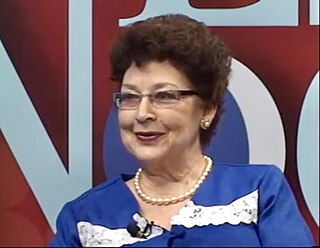This article is being considered for deletion in accordance with Wikipedia's deletion policy. Please share your thoughts on the matter at this article's deletion discussion page. |

Tinta Invisible is a romantic verse story written by Nicaraguan poet Max L. Lacayo. This poetry book was published in Managua, Nicaragua, in October 2010 by the Esquipulas Publishing house. [1] [2]
Composition
The book is composed of 22 parts, the majority of which are subdivided into 2 or 3 sections.
Literary technique
In Tinta Invisible the poet/narrator uses a poetic technique that resorts to a narrative tone, to a very innovative space and rhythm. This invites the reader to become familiar with the work, to fuse itself in it and to maintain the interest until the end. The author tries to attract the interest of potential poetry lovers and to promote the almost lost interest for this literary genre. In its totality, the story is narrated in verses. As a peculiar thing, the parts and the sections of the story have their own life, constituting something complete on their own. There we see poems within poems and stories within the story.
Historical context
Tinta Invisible’s story takes place in the first decade of the 21st century, in a historical frame recognizable by the vertiginous height of the social networks. Those places in the Internet whose reality is undeniable since they exist for the human encounter and the social interaction and in them the individual finds popularity, social integration, education, and bonds of affection and business.
Characters
Diana, poet/muse and the poet/narrator, who reencountered by accident in the social networks of the indomitable virtual world. The development of that friendship is initiated with an interchange of memories that takes them by splendid literary courses and it drags them to a sweeping romance. They are the protagonists of an evocative story of poetry, coincidences and love.
Genesis of the story
The writing of this work took place between October 2009 and June 2010, to be published in July of the same year. Having published two works in English in 2009, [3] [4] not separated of that creative current, the author initiated this work inspired by his new participation in the social networks. It is there where Lacayo is inspired, sometimes outside reality, to catch with invisible ink the provocation of the cybernetic dreams.
Interpretation
Tinta Invisible is a romantic story that takes place in its own virtual world. Philosophically, there is an influence of platonic conception in this work. Literarily, we find reminiscences of Pedro Calderon de la Barca. And as far as the time of this idyllic story, we experience the 21st century in its entire splendor. Thus, these verses thread a story that the readers will appreciate like something immanent.
Contribution and originality
In her prologue to Tinta Invisible the writer and journalist Maria Lourdes Pallais [5] indicates what she considers the great contribution of this innovating work: The exquisite balance that it achieves between several worlds.
Pallais explains it: as well as the author of the Great Theater of the World reflected in his work the magnificent but also contradictory 17th century, the most complicated of Spanish history, Lacayo introduces, and places the reader, in this new world of the social networks, the quickest and most untamed until now, where there are no countries, much less borders. Where everything can be what is, or the other way around, or quite the opposite. Where the fantasy, within a certain basic protocol of communication, is the common denominator of the human relations.
According to Pallais, Lacayo achieves a memorable narrative concert between the Calderonian classic story, the modern poetry shades of Rubén Darío, the colors Matisse style, and the postmodern context of the social networks, the new bars of the 21st century.
Poet Blanca Castellón [6] expresses his appreciation for this work in this fashion: “Max L. Lacayo interlaces verse and prose and leads us in loving passage, by the footpath where the intense sensuality shines, refreshing and vital. The same inexplicable magic that ignites the dawns.”
Poet Ariel Montoya [7] indicates: “Max L. Lacayo in his poetic narrative of Tinta Invisible explores the route of the affectionate current of the human feeling and let us clearly see that poetry and the search for the amorous encounter, as virtual bonds, only come to reinforce our romantic reality.”
The most outstanding Nicaraguan newspapers have announced the publication of Tinta Invisible. La Prensa Literaria [8] dedicated a whole page to part I of the book. El Nuevo Diario and Bolsa de Noticias, gave account of the release of this work.
About the author
Max L. Lacayo was born in Managua, Nicaragua. Nicaragua is a country with a passion for literature in general and for poetry in particular. He emigrated to the United States in 1979 as a political refugee. Lacayo was educated in New Orleans, where he obtained a postgraduate in Economics. He has experience in the oil industry, teaching and writing. And he has a passion for the arts and politics. Since very young he cultivated Literature, among others disciplines. At 14, he founded the scholastic magazine El Heraldo Juvenil, and was named director of the magazine of the Literary Academy Alfonso Cortés in the Instituto Pedagógico de Managua. Periodically he writes opinion articles in Nicaraguan newspapers and in the 80s he wrote some articles in the Times Picayune in New Orleans. He worked as Teaching Assistant in the Faculty of Economic Sciences at the University of New Orleans and as Instructor of Macroeconomics at the Houston Community College (1995) and recently created an economic indicator. [9] He likes to paint, to invent mathematical games and in one occasion he composed the music to accompany one of his poems. In 2009 Max L. Lacayo published two books: a screenplay, The American Ambassador and a poetry book, My Bare Essence. And in 2010 he published Tinta Invisible, a romantic story written in verses.






